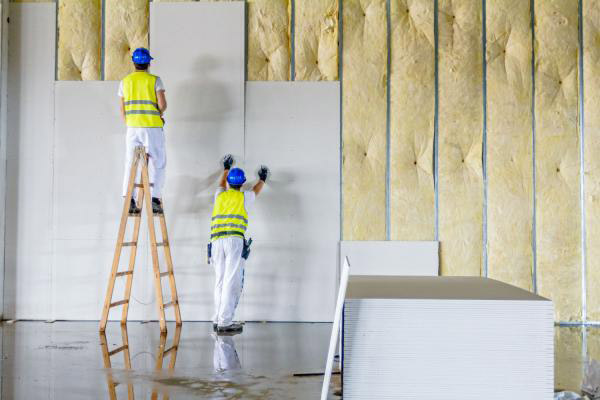E-mail: marketing@hbhuamei.com
In the construction industry, architects and engineers often face the challenge of balancing aesthetics, functionality, and energy efficiency in building design. One material that has gained prominence for its versatility and effectiveness in addressing these requirements is glass wool. Used extensively in walls of various buildings, glass wool serves multiple purposes, ranging from insulation to soundproofing and fire resistance. Understanding why glass wool finds its place in modern construction is crucial for appreciating its significance in building design.

One of the primary reasons for incorporating glass wool in building walls is its exceptional insulation properties. Glass wool is composed of fine fibers made from molten glass, spun into a cotton candy-like material. This structure traps pockets of air, creating an effective barrier against heat transfer. As a result, buildings insulated with glass wool experience reduced heat loss in colder climates and decreased heat gain in warmer regions. This thermal insulation capability significantly enhances energy efficiency, leading to lower heating and cooling costs for building occupants.
In the face of growing environmental concerns, energy efficiency has become a paramount consideration in construction practices. By minimizing thermal bridging and improving the overall thermal performance of a building envelope, glass wool contributes to achieving higher energy efficiency standards. Reduced energy consumption not only lowers utility bills for occupants but also diminishes carbon emissions associated with heating and cooling systems, thereby promoting sustainability.
Moreover, glass wool is typically manufactured from recycled glass, making it an environmentally friendly choice. By diverting waste materials from landfills and incorporating them into building components, the use of glass wool supports circular economy principles, aligning with the global trend towards sustainable construction practices.
In addition to thermal insulation, glass wool serves as an effective sound absorber, enhancing acoustic comfort within buildings. The porous structure of glass wool allows it to trap and dissipate sound waves, reducing noise transmission between rooms and minimizing external disturbances. This property is particularly beneficial in buildings located in urban environments or near high-traffic areas, where noise pollution can be a significant concern. By creating quieter indoor environments, glass wool contributes to occupant well-being and productivity.
Safety is paramount in building design, and glass wool offers inherent fire-resistant properties that enhance the structural integrity of walls. Unlike organic insulation materials, such as foam or cellulose, glass wool is non-combustible and does not contribute to the spread of flames. In the event of a fire, glass wool insulation helps contain the fire within compartments, delaying its spread and providing occupants with crucial time to evacuate safely. This fire-resistant characteristic is essential for compliance with building codes and regulations, ensuring the protection of life and property.
Glass wool itself does not contain formaldehyde. Its main components are glass fiber and a small amount of resin, which is used to solidify and bond glass fiber. However, glass wool may use certain resins or glues in the production process, and some resins or glues may contain formaldehyde.
Huamei formaldehyde-free glass wool has green environmental certification. The materials used in production do not contain formaldehyde. It uses pure edible plant ecological adhesives. The finished product does not contain formaldehyde or acrylic acid. It has the aroma of edible bread, avoiding the harm of harmful substances such as formaldehyde and phenol to the human body and the environment.
Another advantage of glass wool is its versatility, allowing architects and designers to incorporate it seamlessly into various wall assemblies and architectural styles. Whether used in timber-framed constructions, steel structures, or concrete buildings, glass wool can be tailored to meet specific design requirements without compromising performance. Its flexibility extends to installation methods as well, offering options for both traditional batt insulation and more innovative solutions, such as blown-in or sprayed applications.
In conclusion, the use of glass wool in building walls is driven by its multifaceted benefits, including thermal insulation, sound absorption, fire resistance, and sustainability. By addressing critical aspects of building performance and occupant comfort, glass wool plays a pivotal role in modern construction practices. As the demand for energy-efficient and environmentally responsible buildings continues to rise, the importance of materials like glass wool is expected to grow, shaping the future of sustainable architecture and construction.
Copyright © Huamei Energy-saving Technology Group Co., Ltd. All Rights Reserved | Sitemap | Privacy Policy
Insulation solutions LIST: Insulation solutions LIST